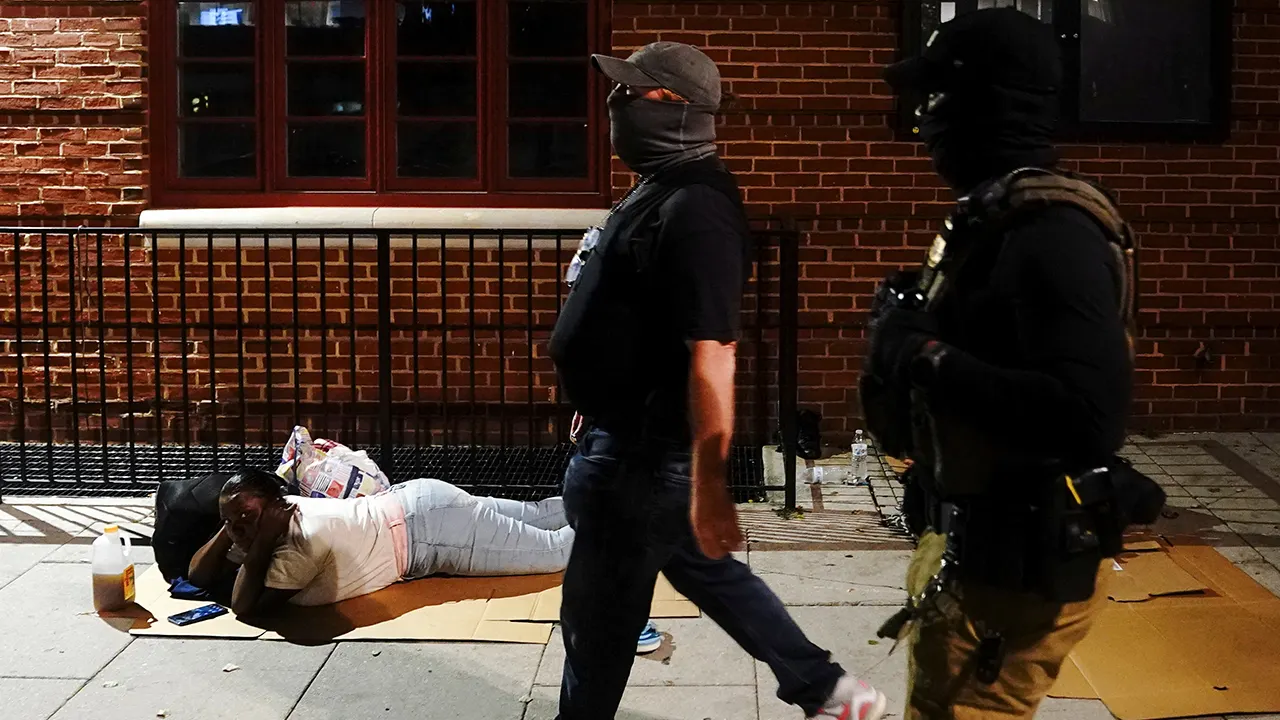Radical mythology deemed December 14, 1825, the beginning of the Russian revolutionary movement. Tsar Alexander I had died three weeks earlier, and it was still not clear which of his brothers, Konstantin, who was in Warsaw, or Nicholas, who was present in the capital, would succeed him. Taking advantage of the confusion, a group of aristocratic army officers led their soldiers to the Senate Square, ostensibly to support the absent Konstantin but really to overthrow the monarchy.
Nicholas dispatched the famous general Mikhail Miloradovich to reason with them, but as soon as he turned his back, he was shot dead, as was the next general who tried to persuade the men to disperse. At last Nicholas, who had done everything possible to avoid force, authorized it. Eighty people were killed. Two weeks later, the Southern Society, another branch of the revolutionary movement, staged a revolt in Ukraine, which was also suppressed.
Eventually, 290 of the 579 people arrested were acquitted, 139 convicted of minor offenses, and the rest condemned to serious punishments. (The Decembrists—and those who have celebrated them—never seemed to have worried that the common soldiers they misled would suffer.) Five Decembrist leaders were hanged. They were soon celebrated as martyrs. The other serious offenders were stripped of noble rank and exiled to Siberia. In some cases, their wives gave up their life of privilege to join them. Not only did these brave women have to endure exceptionally harsh conditions, they also lost the right to return. Ever since, the loyal “wives of the Decembrists” have been regarded as models of Russian womanhood.
In 1856, the next tsar, Alexander II, pardoned the surviving Decembrists, and the original drafts of Tolstoy’s War and Peace begin with the return of the characters we know from the novel’s published version as Pierre and Natasha from Siberian exile.
Susanna Rabow-Edling’s new study of the Decembrists provides a wealth of fascinating detail on just what happened in these two uprisings and the punishments that followed. Unfortunately, she writes less as a scholar than as a partisan trying to put the best face on the Decembrists and all they thought and did. Presenting them as a relatively moderate group of reformers “led by a strong belief in liberal and republican ideas,” she acknowledges “there were slightly different opinions” about goals and that they “differed somewhat” about values. But the differences were not slight. Some Decembrists were indeed moderate reformers with liberal values, but others belong to the authoritarian tradition.
Consider the leader of the Southern Society, Pavel Pestel, described by other historians as a Jacobin or proto-Bolshevik. Pestel envisaged that, after the seizure of power, a “provisional government” would assume dictatorial powers for a decade or until the society’s goals were achieved. Another Decembrist pointed out that nothing prevented such a dictatorship from holding onto power indefinitely. Believing that his social ideas derived logically from the laws of nature and were therefore mathematically certain, Pestel insisted on absolute uniformity and unanimity. He therefore regarded the very thought of federalism, favored by other Decembrists, as inherently evil, and viewed all compromise as treason. Unsurprisingly, he disdained the British parliamentary system for allowing an opposition. He regarded it as the tool of an “aristocracy of wealth” that was even worse than the Russian aristocracy by birth.
Since the laws of nature do not vary by time and place, Pestel had no respect for cultural difference. He prescribed that the country’s non-Russian nationalities lose their language and traditions as they became thoroughly Russified. Two groups he regarded as unassimilable, Jews and tribes from the Caucasus, were to be deported. Pestel acknowledged Poland’s right to independence, but the independence he imagined entailed Russian control of its foreign policy, army in wartime, and form of government. Not without reason, scholars have likened such “independence” to Poland’s status under Soviet domination.
To enforce uniformity, Pestel envisaged a large secret police force, or, as he called it, a garde perdue, to restrain “the wicked-will power of man,” always prone to subversion. “By means of espionage,” historian Jenny Schwarz-Socher explains, the secret police “supervise all foreigners … they observe the institutions of Government, they watch over heresy and immorality, they uncover preparation for revolt and secret societies.” Is it any wonder that Lenin’s Bolsheviks viewed the Decembrists as forerunners?
Although Rabow-Edling briefly mentions Pestel’s secret police, she still minimizes his illiberalism. “Some scholars,” she concedes, “argue that Pestel’s provisional government was tantamount to authoritarian dictatorship. It may well be that this is what he had in mind, but we cannot be sure. He was clearly influenced by the French Jacobins and their unorthodox efforts to protect the gains of the revolution against aristocratic reaction. Still, the available evidence is scarce. … Pestel’s own vision is vague and fragmentary.”
Unorthodox? Is that the problem with the French terror? Perhaps Rabow-Edling is unaware that “protect the gains of the revolution” is a phrase from communist apologetics. If contempt for disagreement, compromise, and parliamentary democracy, along with a secret police force ferreting out heresy and the eradication of cultural differences—if all these aims, or even some of them—do not constitute “authoritarian dictatorship,” it is hard to say what would. The Decembrists exhibited a wide range of opinions, not slight differences, and one can trace both the liberal reformist and revolutionary traditions to them.
There was something comic, if not clownish, about the Decembrists. As the Russian cultural historian Yuri Lotman argued in a famous article, they participated in a Russian tradition, dating to Peter the Great’s imposition of Western manners almost overnight, of acting out roles. Self-conscious performers, the Decembrists imitated Lord Byron as well as ancient Greek and Roman heroes, but spent little time planning specific actions or strategy. As historian Anatole Mazour observed, “they overlooked the simplest and most practical issue of the whole plan, namely how to win the battle.”
Win or lose, it was to be a grand spectacle. “We are going to die, brothers, oh, how gloriously we are going to die!” enthused Decembrist Aleksandr Odoevsky. Hardly any of the Decembrists were convinced of the possibility of success, Prince Evgeny Obolensky later recalled. At least they could follow in the footsteps of Brutus; and the weapon Brutus used to kill Caesar, the dagger, figures as an image of glorious regicide not only in Ryleev’s but also in Pushkin’s and Lermontov’s verse.
With theatricality and poetic visions predominating over practical plans, the result was closer to farce than to tragedy. The man designated to lead the revolt, Prince Sergei Trubetskoi, chickened out and hid in the Austrian embassy, where his brother-in-law served as Austria’s minister to Petersburg. Ryleev overslept. One of Rabow-Edling’s key theses is that “this movement came close to succeeding in bringing down the monarchy” and she cites numerous opportunities the Decembrists missed. Aleksandr Bulatov, for example, stood with loaded pistol 20 paces from Nicholas for two hours, but couldn’t muster the nerve to shoot. Had grenadiers seized a cannon, Rabow-Edling clams, “the revolt would have been different.” In these and other cases Rabow-Edling cites as examples of near success, it is not hard to detect the reason for failure: the clownish incompetence of people sensitive to poetry but utterly unsuited for action.
Writing as a partisan, Rabow-Edling sometimes spoils her narrative with anachronistic judgments. Just call something conservative and it is bad. “The Decembrist wives are usually portrayed as the ideal image of the loyal wife,” she explains, but that image fits “conservative historiography.” Writing of Decembrist Andrei Rozen, who was exiled to Siberia, she observes: “In common with many contemporary male colonizers, Andrei was more interested in mapping and categorizing indigenous people than in getting to know and understand them.” If prisoners transported against their will to Siberia were “colonizers,” then so were the 9/11 terrorists incarcerated in Guantánamo. Rabow-Edling herself often writes from her own political perspective instead of doing what a historian should do: “get to know” the people she describes and convey not what she thinks they ought to have felt and thought but what they actually did, and why.
The First Russian Revolution: The Decembrist Revolt of 1825
by Susanna Rabow-Edling
Reaktion Books, 320 pp., $30
Gary Saul Morson is a professor of Slavic languages and literatures at Northwestern University and author, most recently, of Wonder Confronts Certainty: Russian Writers on the Timeless Questions and Why Their Answers Matter (Harvard).
Read the full article here








